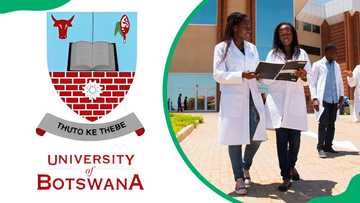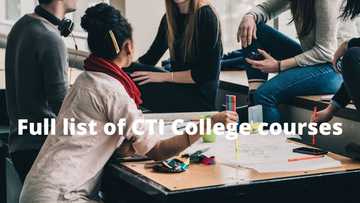What is coding and robotics and where is it applied in South Africa?
Based on the technological advancement in recent times, the eagerness to learn coding and robotics has increased sporadically. Many people have realised the importance and the opportunities associated with it. Thus, this revelation has spurred many to take coding and robotics classes, South Africans inclusive.
PAY ATTENTION: Сheck out news that is picked exactly for YOU ➡️ find the “Recommended for you” block on the home page and enjoy!

Source: UGC
Coding and robotics have become essential subject people want to learn about. But then, one could link this recent influx to an announcement that Angie Motshekga, the Basic Education Minister, made stating that the Coding and Robotics Curriculum for South Africa Grades R-3 and seven have been piloted in schools nationwide.
What are coding and robotics?
Coding and robotics is the latest subject adopted by the Department of Basic Education to equip learners towards technological advancement. It aims to train learners for the Fourth Industrial Revolution by equipping them to build a digitised society.

Read also
Eskom launches innovative crowdsourcing platform, transforming its search for skilled candidates and experts
The coding and robotics in SA's curriculum were released by the Department of Basic Education (DBE), which is suitable for the foundation, intermediate, and senior phases. It is spread across four terms based on South Africa's school year and can be further divided into topics. The topics are:
PAY ATTENTION: Never miss breaking news – join Briefly News' Telegram channel!
- Algorithm and coding
- Robotic skills
- Problem-solving
- Pattern recognition
- Application skills
- Internet and E-communication
Why do we use coding and robotics?
The Department of Basic Education (DBE) has realised the potential of coding and robotics because many lives are influenced by it. People's lives are surrounded and led by innovations built on the core principles of coding and robotics. Among other functions, it enables the swift execution of tasks and helps solve problems analytically and creatively.
Thus, this realisation spurred the rationale of teaching coding and robotics in schools. Nonetheless, here are plausible reasons why we use them:

Source: UGC
Perspective
There is a need for critical, practical, analytical, and creative thinking to navigate robotics and coding successfully. People with these skills are equipped with other imperative soft skills and can think in ways others cannot. Consequently, this skill and perspective is not just a gain to one's work but can be applied to different situations. Having such an edge is a great advantage.
Healthy competition
Technology is the rave of the 21st century, and rightly so. The world is digitising and evolving, and robotics are the best tools to learn to stay on top of technological trends. With adequate training and knowledge, South Africans can compete, be fully aware of developments, and interpret the effect of the Fourth Industrial Revolution on every aspect of life.
While technology has been tagged as a revolution that brought about a deluge of bad habits and has done more harm than good, this technology, if well utilised, will equip and place the country in a strategic position in Africa.
The future
To fully understand the future, coding and robotics are essential. Daily, the use of human intervention is dwindling, and it would further become minimal. Robotics and coding have impacted banking, communication, brick-and-mortar office space, and education. So, one can easily predict its prevalence in the forthcoming years.
How is robotics different from coding?
Coding and robotics are among many fields of Computer Science. They go hand-in-hand, and the reason is not far-fetched. Coding is a set of instructions a robot follows and interprets to serve its purpose. In contrast, robotics is the application of machines and programming tools to program robots to carry out instructions. While their duties are closely knitted, robotics is different from coding.
What coding is used for robotics?
Both block-based and text-based codings are used for robotics. Coding helps to communicate with computers via a certain set of instructions and languages. These languages include Python, Java, and Fortran.
Block-based coding
This is the perfect approach for a beginner who is interested in coding. It uses a stack of various shapes of blocks that can be connected easily. Errors can be debugged easily through block-based coding.
Text-based coding
Unlike block-based coding, text-based coding is based on predefined syntax, and the chances of error are higher because you have to type each line of code.

Source: UGC
What skills do students learn in coding and robotics?
Students enrolling in coding and robotics classes learn employability skills, including collaboration, teamwork, problem-solving, robotic skills, and much more. Students can move from the basic level to the intermediate, and with the right intermediate phase grades, students can move to the professional phase.
Where are coding and robotics applied in South Africa?
Angie Motshekga mentioned that the subjects would be integrated at different school levels from Grade R to Grade 9. Details of this are given below:
Grade R-Grade 3
For Grade R-3, the subject will be organised into five study areas ranging from pattern recognition to algorithm and coding to application skills.
Grade 4-Grade 6
The subject will be organised into four study areas for the intermediate phase. They are robotics skills, internet and e-communication, application skills, and algorithm coding.
Grade 7-Grade 9
This is the senior phase, and the subject has been organised into four study areas. They are robotic skills, application skills, and algorithm coding.
Coding and robotics are becoming an essential part of students' curricula. Besides the excitement associated with seeing a robot in class and learning something unconventional, it improves the student's knowledge.
READ ALSO: How to sell on Takealot in 2022? Step-by-step guideline
As published on Briefly.co.za, selling online allows sellers to reach a wider range of prospective customers. More so, with platforms like Takealot, sellers do not have to own a physical shop before selling.
So, how do you sell on Takealot? The process begins with registering your account. Check out the post to learn the easy step-by-step process.
PAY ATTENTION: Сheck out news that is picked exactly for YOU ➡️ find the “Recommended for you” block on the home page and enjoy!
Source: Briefly News






